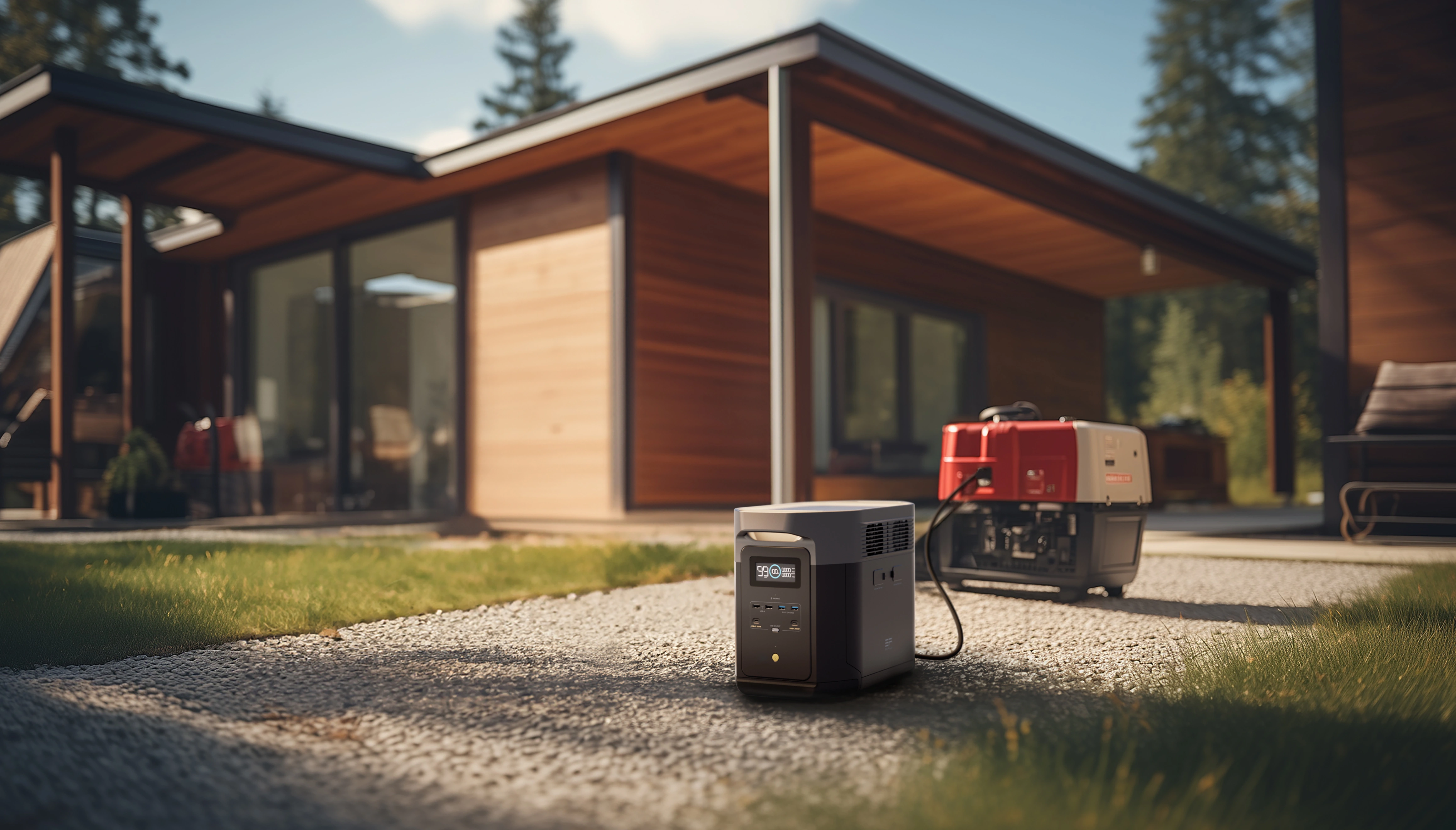Ham Radio Field Day & Emergency Comms: A Guide to Silent, Off-Grid Power
Field Day is exciting: antennas reaching for the sky, friendship, and a gas generator humming. This familiar background noise often hinders contact-making and hobby enjoyment. Why not consider quieter, cleaner power for your operations? Luckily, modern, silent, off-grid power options are altering Field Day and crucial emergency communications, as this guide will demonstrate. Moving past the noisy past, you'll discover how to choose the perfect arrangement.
Why Silent Power is Important for Modern Ham Radio Operations
Traditional generators, while effective, come with several downsides. Silent power offers clear advantages, making your operations more enjoyable and effective. This shift provides benefits for both everyday ham activities and crucial emergency situations.
For Field Day: Improving Your Operating Experience
No one likes a noisy neighbor, especially when trying to pull in a weak signal. Silent power brings a new level of courtesy and efficiency to your Field Day setup. It truly upgrades your overall experience.
Stealth and Consideration: Without the roar of a generator, you avoid disturbing fellow operators or anyone living nearby. It creates a much more peaceful operating environment for everyone. Also check local quiet‑hours rules at parks or campgrounds, as loud generators may be restricted at night.
Clearer Communications: Being able to clearly hear faint signals without engine noise in the background can significantly improve your chances of making contacts. You'll catch signals you might otherwise miss.
Simple and Safe Setup: There's no need to transport or deal with flammable gasoline. Just charge up your ham radio power supply and you're ready to go. This simplifies your logistics and increases safety. Use proper fusing, adequate cable gauge, and ventilation during charging; never run fuel‑burning generators indoors.
For Emergency Communications: Reliable Backup Power Supply When it Counts Most
When disaster strikes, your backup power supply for ham radio becomes absolutely critical. Silent, off-grid power offers distinct advantages, ensuring your communication lines stay open without drawing unwanted attention. This reliability is key in uncertain times.
Tactical Silence: In a real emergency, a loud generator can broadcast your position and resources, potentially making you a target. Silence offers a layer of safety and security.
Independent Fuel Source: During a disaster, gas stations might lose power or run out of fuel. Solar power, on the other hand, is a constantly renewable and sustainable resource.
Clean Power for Sensitive Equipment: Modern digital radios, laptops, and networking gear need stable, clean power. Unlike some gas generators that produce "dirty" power, solar generators provide a pure sine wave output, protecting your valuable investment.


Sizing Your Power Supply for Ham Radio Needs
Knowing how much power you actually need is the first step toward building an effective off-grid system. We'll walk you through a simple process to calculate your energy demands and select the right equipment. Getting this right ensures you have enough power for all your operations.
Step 1: Check Your Station's Power Use
Before choosing a power source, you need to understand what you'll be powering. Make a list of all your equipment and their individual power requirements. Don't forget to account for peak loads during transmission.
- List every piece of equipment you plan to power, such as your HF/VHF radio, laptop, LED lights, and phone chargers.
- Find the power consumption (in Watts) for each device. For radios, remember to note the difference between Receive (Rx) and Transmit (Tx) power draw, as transmit consumes much more.
- Use your rig's published RX/TX current at 13.8 V to avoid under‑ or over‑sizing; many HF rigs draw ~1–2 A on RX and much higher current on TX.
Step 2: Figure Out Your Total Energy Needs
Once you know each device's wattage, you can calculate the total energy (in Watt-hours) you'll need over your operating period. This helps determine the overall capacity of your ham radio power supply. It's easier than you might think.
Here's a simple way to calculate your total Watt-hours (Wh):
Total Watt-hours (Wh) = Device Wattage (W) x Hours of Use (h)
Equipment | Power (Watts) | Est. Hours of Use (24h) | Watt-hours (Wh) |
HF Radio (Receive) | 25 W | 20 hours | 500 Wh |
HF Radio (Transmit) | 100 W | 4 hours | 400 Wh |
Laptop | 65 W | 8 hours | 520 Wh |
LED Light | 10 W | 12 hours | 120 Wh |
Total Required | 1540 Wh |
Step 3: Pick a Generator with Enough Capacity
After calculating your total energy needs, you can choose a solar generator that provides enough capacity. It's always a good idea to select a unit with a bit more capacity than your calculated total for a safety margin. Also, check the inverter's output rating (in Watts) to ensure it can handle all your devices running at the same time. This capacity keeps your station running smoothly.
Comparing Top Off-Grid Power Solutions
When looking for a reliable backup power supply, you have several choices. Each option has its own set of pros and cons regarding noise, fuel, and portability. This comparison will help you decide which solution best fits your needs, whether for Field Day or emergency use.
Feature | Solar Generators | Gas/Diesel Generators | DIY Battery + Inverter |
Noise Level | Silent | Very Loud | Silent |
Fuel Source | Sun, AC, Car | Gas/Diesel | AC, Car, Solar (if added) |
Emissions | None | Harmful Fumes | None |
Maintenance | Minimal | High (oil, filters) | Moderate (component care) |
Power Quality | Excellent (Pure Sine Wave) | Varies (can be "dirty") | Depends on Inverter |
Portability | Excellent (all-in-one) | Poor (heavy, bulky) | Moderate (multiple parts) |
This comparison shows that solar generators offer a compelling blend of quiet operation, clean energy, and excellent power quality, making them a strong contender for your ham radio needs. DIY setups provide flexibility, but require more technical knowledge to assemble. EcoFlow's DELTA line emphasizes portability with expandable capacity (e.g., DELTA 2 to 2048 Wh with extra battery) for growing station needs.


Pro Tips for Off-Grid Radio Deployment
Setting up a reliable off-grid radio station requires a bit of planning and smart operation. These practical tips will help you maximize your power efficiency and ensure your station runs smoothly when it matters most. They cover everything from solar panel placement to managing your power consumption.
Get the Most from Solar Charging: Position your solar panels where they get maximum sunlight throughout the day. Angle them directly toward the sun and avoid any shadows from trees or buildings. Even a small shadow can significantly reduce charging efficiency. Series‑wired panels are especially sensitive to partial shading; use bypass diodes or parallel strings when possible.
Practice Power Conservation: Simple habits can extend your operating time. Dim your screen brightness, use headphones instead of speakers, and reduce your transmit power whenever possible. Consider low‑power modes and efficient laptops or tablets to cut idle draw. Every little bit of energy saved adds up.
Know Your Connectors: Familiarize yourself with common ham radio power connectors. Make sure you have the right adapters and cables to seamlessly connect your radio and accessories to your solar generator. Proper connections prevent power loss and ensure safety.
Build in Backup Plans: For crucial emergency communication situations, it's wise to have redundancy. Consider a second, smaller power station, or keep a fully charged traditional car battery on hand with an inverter. This ensures you have options if your primary system runs into issues. If using a vehicle battery, avoid deep discharges that could prevent starting; add a low‑voltage cutoff or DC‑DC charger.
Powering the Future of Amateur Radio
Adopting modern, silent, off-grid power solutions brings clear advantages to amateur radio. These systems offer quieter operation, enhanced safety, and greater reliability, especially when emergency communications are vital. They also provide cleaner power for your sensitive electronics.
Enhance your ham radio setup with EcoFlow's DELTA 2, and experience quiet, reliable, off-grid power that grows with your station. Explore how the expandable 2048 Wh capacity can keep your operations running longer and safer.
FAQs About Off-Grid Power for Ham Radio
Q1: What are the main benefits of using a solar generator over a gas generator for ham radio?
Solar generators are completely silent, which is ideal for clear radio reception and for maintaining a low profile during emergencies. They produce no harmful fumes, making them safe for indoor or enclosed outdoor use. They also provide clean, stable power, which is important for sensitive electronic equipment like modern radios and laptops. Fuel is free and renewable from the sun, eliminating the need for storing or transporting gasoline.
Q2: Can I charge a solar generator with my car battery?
Most modern portable solar generators include a car charger adapter, allowing them to be recharged from your vehicle's 12V cigarette lighter outlet. This is a convenient option for topping up your generator while driving or if solar input is limited. However, charging from a car battery is generally slower than charging via solar panels or an AC wall outlet. It's a useful backup power supply method, but not typically the primary charging solution.
Q3: How long can a typical solar generator power a ham radio?
The operating time depends heavily on the solar generator's capacity (Wh) and your radio's power consumption. A typical HF radio might draw 25-50 watts on receive and 50-100 watts on transmit. For example, a 1000Wh solar generator could power a radio drawing an average of 50W for about 20 hours (1000Wh / 50W). If you also power a laptop and lights, the duration will decrease. Efficient operating practices and good solar charging can significantly extend run times.